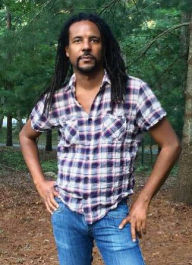From the Publisher
“A tour de force.” —Luc Sante, The New York Times Book Review“Pitch-perfect. . . . Utterly authentic. . . . The Colossus of New York is quite simply the most delicious 13 bites of the Big Apple I’ve taken in ages.” —Grace Lichenstein, The Washington Post
“A love letter to New York. . . . Colossus illuminates innumerable little moments that define the city.” —San Francisco Chronicle
“The cheapest, most stylish ticket to the Big Apple between two covers. . . . .It’s as if Whitehead’s scooped his pen into the collective unconscious of everyone who’s ever visited New York.” —Pittsburg Post-Gazette
“A revelatory ode to Gotham. . . . Whitehead’s engaged eyes and precise prose show us the small details we overlook and the large ones we fail to absorb.” —The Miami Herald
“Smooth, dazzling, evocative. . . . [Whitehead] writes wonderfully, commanding a lush, poetic, mellifluous prose instrument.” –The Nation
“[Whitehead is] a scientist of metropolitan encounters, he surveys places where the masses collide, knitting together hundreds of observations and calculations that usually remain unspoken. . . . The musical prose thrums with urban momentum.” —The Village Voice
“[Whitehead’ s] New York, like Walt Whitman’s or Thomas Pynchon’s or Woody Allen’s, is full of incantatory potential. Even the subway, ordinary, noisy, gruddy inevitability, becomes a ferry to the Underworld.” —The Atlanta Journal-Constitution
“[A] rhapsodic ode to Gotham.” —Time Out
“Jazzlike. . . . A vivid impressionistic montage of Manhattan.” —The Seattle Times
“Whitehead’s series of vignettes and remembrances paint a perfect visual landscape. . . . A heartfelt tribute to Whitehead’s home.” —The Oregonian
“Lyrical. . . . Lean and full of longing. . . . The kind of book that will be . . . passed around, dog-eared, library-tagged, resold, from reader to reader. . . . Whitehead takes a known and specific place and universalizes it, insinuating it into the meshwork of our thoughts in a manner impervious to time and trend.” —Minneapolis Star Tribune
“Thrums with anxious excitement and excited anxiety accommodating the noirish, the reportorial, and the epigrammatic. . . . The best passages deserve comparison with E.B. White’s Here is New York.” —Entertainment Weekly
“Whitehead [is] one of the city’s and country’s finest young writers. . . . [A] guided tour de force.” —Chicago Tribune
“Jazzlike. . . . A vivid impressionistic montage of Manhattan.” —The Seattle Times
“A revelatory ode to Gotham. . . . Whitehead’s engaged eyes and precise prose show us the small details we overlook and the large ones we fail to absorb.” —Miami Herald
“Profound and playful.” —Los Angeles Times
“Whitehead’ s series of vignettes and remembrances paint a perfect visual landscape. . . . A heartfelt tribute to Whitehead’s home.” —The Oregonian
“Rhapsodic love letters . . . elegant, ambitious essays.” —New York Post
“Impressionistic . . . [an] affecting homage to E.B. White.” —New York Magazine (Top Fall Book Pick)

















